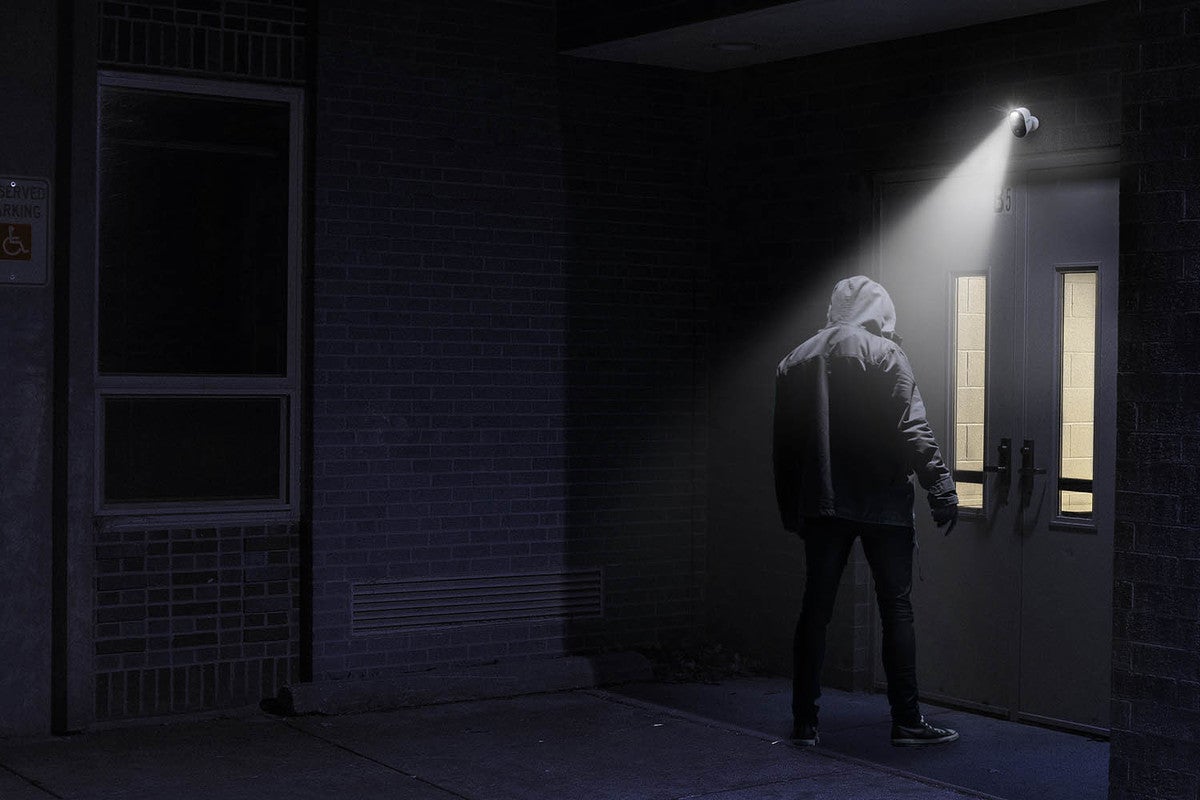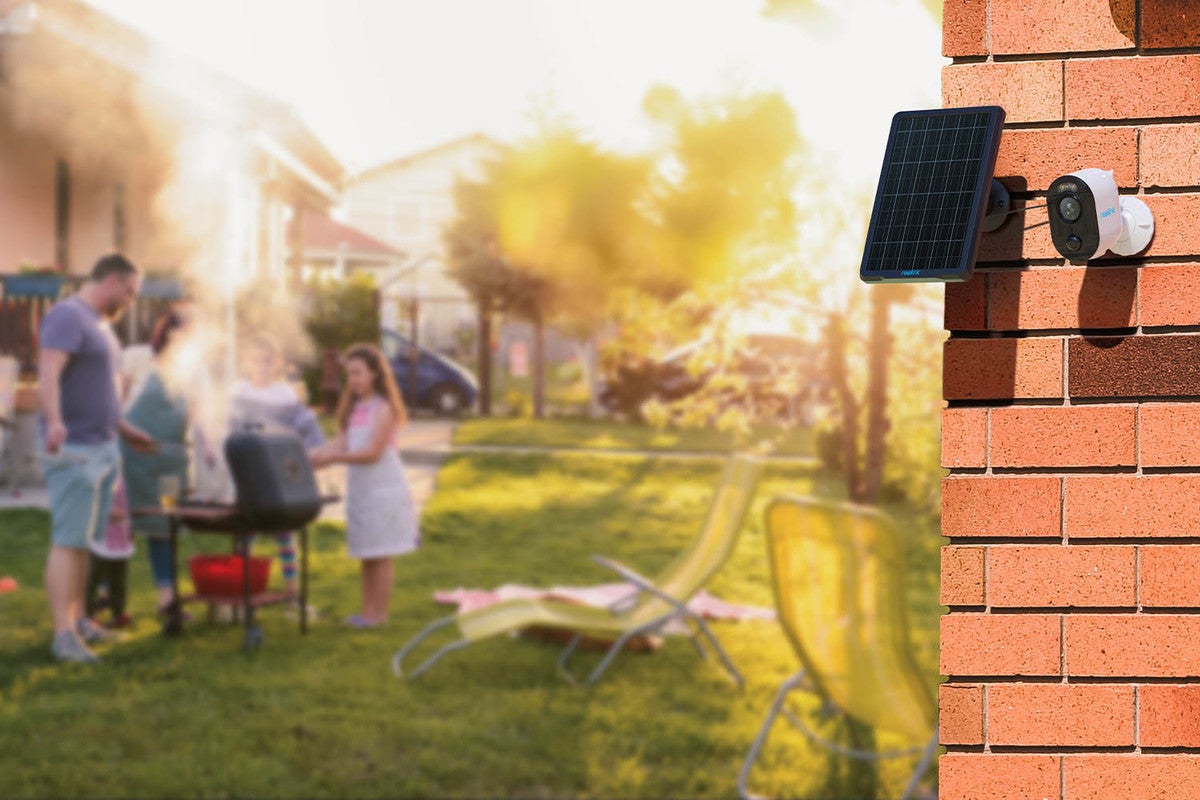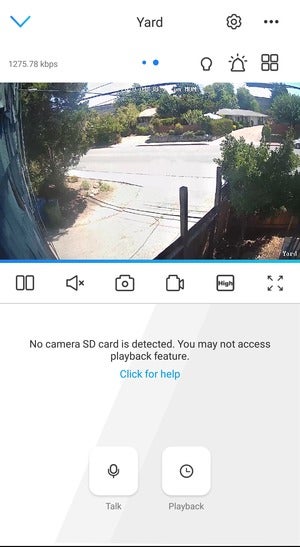[responsivevoice_button rate=”1″ pitch=”1.2″ volume=”0.8″ voice=”US English Female” buttontext=”Story in Audio”]
Reolink Argus 3 security camera review: New look, same great performance
Reolink found a good niche with its first Argus, a truly wireless home security camera with just the essential features. Now on its third iteration, the camera has a new look and some smart additions, including an integrated spotlight and color night vision. Even better, Reolink has introduced these new twists without mucking with the camera’s easy operation and simple feature set.
Design
With its modular size, white enclosure, and black face, the redesigned Reolink 3 resembles a more squat Arlo Pro 3. On the front are a status LED, a 230-lumen spotlight (something else it shares with the Arlo Pro 3), six infrared LEDs for night vision, a fixed focal length lens with a 120-degree field of view, daylight sensor, microphone, and a passive-infrared (PIR) sensor for motion detection. On the back are a battery status LED, micro-USB port, and speaker. A power switch, reset button, and microSD slot are concealed on the bottom, beneath a rubber cap. Features that put the Arlo Pro 3 ahead include higher resolution (2K vs. 1080p for the Argus 3), a wider field of view (160 degrees vs. 120 degrees for the Argus 3), and stronger digital zoom (12x vs. 6x for the Argus 3). It’s also worth noting, of course, that the Arlo Pro 3 must be purchased in a two-pack with a base station for $500, and that an Arlo Pro 3 purchased individually as an add-on costs $200. You can pick up a single Argus 3 for $110.
Reolink has rethought power supplies with each iteration of the Argus. The original camera used disposable CR123A batteries. Those were improved upon in the Argus 2 with a removable, rechargeable 63V lithium battery. As part of the Argus 3 makeover, the battery has been built in. That means the whole camera must be removed from its mount and plugged into an outlet when the battery runs low. If that seems like too much hassle—and it will be—you can connect it to an inexpensive ($25) Reolink Solar Panel to keep the battery continuously charged.
This review is part of TechHive’s coverage of the best home security cameras, where you’ll find reviews of competing products, plus a buyer’s guide to the features you should consider when shopping.
 Reolink
ReolinkThe redesigned Argus 3 includes a spotlight and color night vision.
Another addition is support for Reolink’s cloud storage subscriptions, which had been available for other Reolink cameras, including the Reolink Go and E1 Pro, but not for the Argus series. The free Basic plan provides 1GB of storage with a 7-day history for a single camera. If you purchase multiple cameras or just want more time to view saved video clips, you’ll need to open your wallet.
The Standard plan includes 30GB of cloud storage and a 30-day cloud video history for up to five cameras for $3.50 a month or $35 a year. The Premier plan increases the storage to 80GB and the number of cameras supported to 10 for $7 a month or $69 a year. Reolink also offers a business plan for up to 20 cameras that gives you a total of 150GB of storage and a 60-day cloud video history for $10.50 a month or $104 a year.
The Argus 3 still offers a local storage option as well via microSD card. It can support up to 64GB cards, although 8GB or 16GB cards are suggested for whatever reason.
Setup and performance
One thing that has not changed, thankfully, is the Argus’ easy setup. Once you download the Reolink app, you just scan the camera’s QR code and log into your wireless network (there’s an 802.11n Wi-Fi adapter onboard, and only 2.4GHz networks are supported). A voice prompt confirms each step along the way.
 Reolink
ReolinkThe Argus 3 can be connected to an optional solar panel that will continuously trickle charge its battery.
The Argus 3 is meant to be used outdoors. It has an IP65 rating for protection from the elements (you can read all about IP codes in this story), and Reolink provides a couple of different options for mounting it. The first is a magnetic mount that makes removing the camera for recharging a bit easier. That, of course, makes it easier for anyone to remove it, which puts any video evidence it captures at risk. The second option is a security mount that actually screws and locks into the back of the camera. It’s more theft-proof, but less convenient for regular recharging (yet another reason to also pick up that solar panel).
In either case, you’ll need to screw the mount onto an exterior wall or fence. Screws, anchors, and mounting templates are provided, but you must supply your own tools. A loop strap is also included as a means to lash the camera to a tree.
The Reolink app gives you intuitive control of the camera. Directly under the live feed is a toolbar with buttons for pausing the stream, muting the speaker, recording video or taking a screenshot of the feed, toggling the resolution, and entering full-screen viewing. At the very bottom of the screen are buttons for activating the microphone and opening a library of event-triggered video clips. If you have more than one Reolink camera, you’ll find buttons above the feed that enable split-screen mode. You can view up to four camera feeds at once. There are also buttons here that will trigger an on-board siren and turn on the camera’s spotlight.
 Michael Ansaldo/IDG
Michael Ansaldo/IDGThe camera uses a PIR motion sensor which detects body heat. That prevents it from being triggered by things like passing cars.
The camera delivers a very sharp image with accurate colors. Areas with bright sunlight tended to get washed out, though, making it difficult to make out details there. Those could be potential blind spots in video of a break-in or other crime. Night vision can operate in color or black and white. Both modes have about 33 feet of range, which was plenty to light up my yard or driveway, but color is preferable as it provides more forensic details. I was surprised to find that the colors in night vision mode were about as vibrant as they were in daytime mode; typically, they’re a bit duller.
PIR motion detection registers body heat, so it generally can’t be fooled by a tree branch swaying in the wind or a passing car. It can, however, be triggered by animals, so depending on the critter population around your home, you might need to do some calibrating to ensure you’re not alerted to every squirrel that races across your fence top.
The app offers a few ways to deal with this. The easiest is to lower the detection sensitivity. You can also set a schedule for when detection is enabled and disabled, and Reolink allows you to customize it on an hourly basis. Finally, the app includes a toggle labeled simply “reduce false alerts” that you can turn on if you’re getting too many of them.
You can pair the camera with Amazon Alexa or Google Assistant to control it using voice commands and view its feed on a smart display. When my phone wasn’t at hand, I could check in with my Echo Show simply by saying “Alexa, show ‘Yard.’”
Verdict
The Argus 3 is as much an improvement over the Argus 2 as that camera was over its predecessor. At its heart, it’s still a security camera for people who want simplicity and convenience. It might not connect with all the latest smart home devices or identify every member of your family, but this is a great camera for monitoring package deliveries, screening visitors, and generally keeping one eye on the homestead when you’re away. I’d argue that’s all most of us need.



























